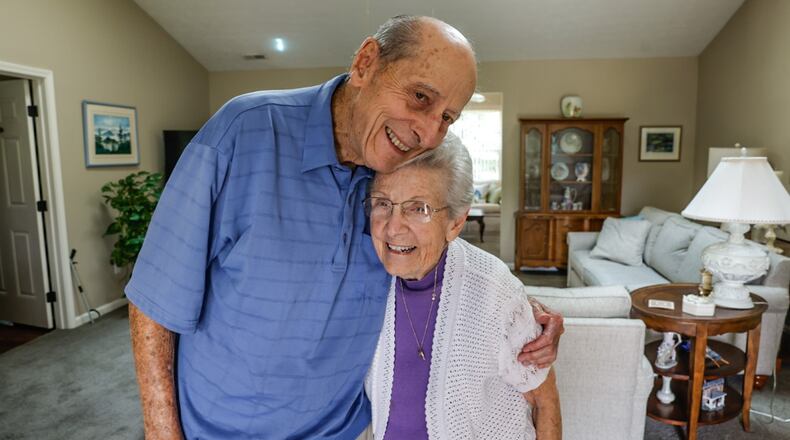Five years ago, when they both turned 85, they decided to make the move, choosing a retirement community in Centerville. Between finding a new place to live and a new place for the items they wouldn’t have room to bring, the process took about a year, she said.
“It was the best thing we could have done,” Nagle said. “We should have done it sooner.”
Downsizing is a special kind of move, from deciding when to do so to determining what to pack. Some businesses even specialize in simplifying the process.
“We do really help take the emotional stress away from the folks we’re moving,” said Deanna Braun, who as the owner of Smooth Transitions of Dayton has helped residents throughout the Miami Valley downsize for 14 years.
Smooth Transitions helped the Nagles, and some of their family members have used the company, too.
Many people who move pack up everything they own because they are relocating to a bigger space, but those who are downsizing need “to flip a switch,” Braun said.
Furniture might not fit. Where will the photos and knickknacks that fill the mantel go? Many who downsize need an extra pair of eyes to help pack what is needed and purge what is not.
“I remind them they can’t fit a gallon of milk in a quart,” Braun said.
That’s where she comes in, explaining how she can help with tasks like drawing up a floor plan, coordinating the movers and determining how many towels and which artwork should be packed.
Credit: Jim Noelker
Credit: Jim Noelker
But before the move comes the decluttering.
Many items can be tackled even years before downsizing, Braun said. Contact a certified public accountant or another financial professional to determine what paperwork can be discarded. Get rid of clothing that is rarely worn. Pare down large book collections.
“Those are things that you’re not going to have space for when you move,” Braun said.
In addition to deciding what to throw away, decluttering also includes deciding what to keep, give away and donate, said Jean Hodge, owner and chief executive officer of Caring Transitions of South Dayton, which helps customers downsize and relocate.
“It’s very challenging when you’re looking at a house filled with 40 years’ worth of stuff,” Hodge said. “It’s often overwhelming for them.”
Start small, she advised. Begin in one room, eliminate distractions, have boxes and a trash bin on hand, and work for an hour.
Besides the physical work involved in downsizing, there also are emotional components, she said. That ranges from flipping through old photographs to ruminating about this stage of life.
While it can take six to nine months to prepare to downsize on your own with your family’s help, that process can be cut to two weeks with a company like Caring Transitions, she said.
“It’s not a long, drawn-out process. It’s not as emotional if you have someone do it for you,” Hodge said.
A number of signs might point to it being the right time to downsize, she said. Has maintaining a house become more overwhelming? Are chores more difficult? Have others suggested a smaller home? Have your neighborhood friends moved or downsized?
“The farther in advance you can plan this on your own terms, the happier you’ll be,” she said.
Older adults who are downsizing into a new house should build it to age-in-place, said Tim Rudd, a certified aging-in-place specialist and certified senior adviser at Independent Solutions. The Middletown-based company, which he founded, offers services to help seniors throughout southwest Ohio age in place.
For example, install grab bars in bathrooms, non-slip flooring, security cameras and wide doorways and hallways, he said. Minimize the number of steps and have both a bedroom and full bathroom on the first floor.
Also consider what other adaptations your downsized home might need to fit your abilities and lifestyle, he said.
Most of the clients Rudd works with want to remain in their own home. For those who want to downsize, he recommends working with a company that specializes in it.
“They’re worth their weight in gold,” he said.
For the Nagles, who celebrated their 67th wedding anniversary this year and are both 90 years old, downsizing was the right decision.
“We’re still active and going strong, but you never know,” Nagle said.
About the Author


